Feature Story
Health Center Today, July 27, 2010
Giant Magnet Lands… Through the Roof
By Chris DeFrancesco
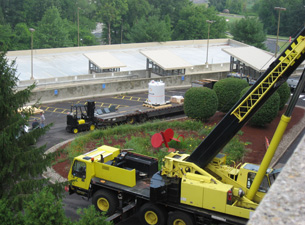
Crane operators prepare to hoist a four-ton magnet, the primary component of the Health Center’s 800 MHz NMR spectrometer.
Photos by Mark Maciejewski
A sophisticated imaging machine known as an 800 MHz nuclear magnetic resonance (NMR) spectrometer is now in place in the Gregory P. Mullen NMR Structural Biology Facility, in the Health Center’s sub-basement.
Almost as challenging as securing the $2 million National Institutes of Health grant for the new NMR spectrometer was the task of getting its primary component into the building.
The machine’s four-ton magnet wouldn’t fit in any of the elevators that reach the sub-basement, so Campus Planning staff, engineers from the magnet’s manufacturer, and rigging contractors had to lower it down an air shaft with a giant crane. They successfully did so the morning of July 24.
NMR is an imaging technique that enables researchers to study the structure, function, and dynamics of proteins.
"Knowing the three-dimensional structures of proteins is essential for understanding their biological function, and is invaluable for indentifying lead compounds as drug candidates," says Jeffrey Hoch, professor of molecular, microbial and structural biology and principal investigator on the grant that made the acquisition possible.
Once it’s operational – likely before the end of the summer – the new machine will be the university’s most powerful NMR spectrometer among the four at the Health Center and three in Storrs. It’s one of fewer than 50 instruments of its caliber in use at academic institutions in the United States.
"The proteins that will be studied using the new instrument are involved in viral and bacterial infection, cancer, neural development, and other biological pathways important for both health and disease," Hoch says.
In preparation for the installation of the new spectrometer, the Mullen NMR Facility underwent nearly $1 million in renovations.
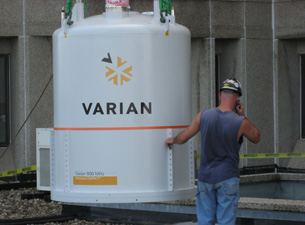
A rigging contractor is in contact with the crane operator as the crew positions the magnet to be lowered into the air shaft.
Photo by Mark Maciejewski
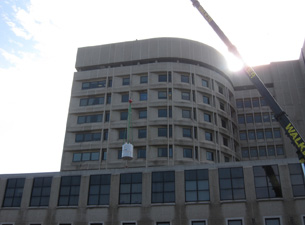
Too large for a standard elevator, the magnet’s only way into the sub-basement is through an air shaft by way of the roof.
Photo by Jeffrey Hoch
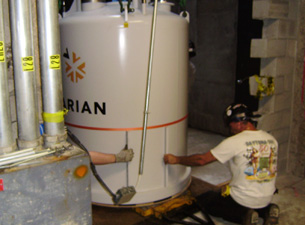
Crew members prepare to remove the magnet from the bottom of the air shaft.
Photo by Tom Wisehart
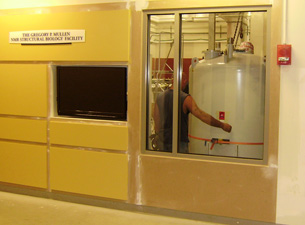
The unit is moved into position in the lab.
Photo by Tom Wisehart


